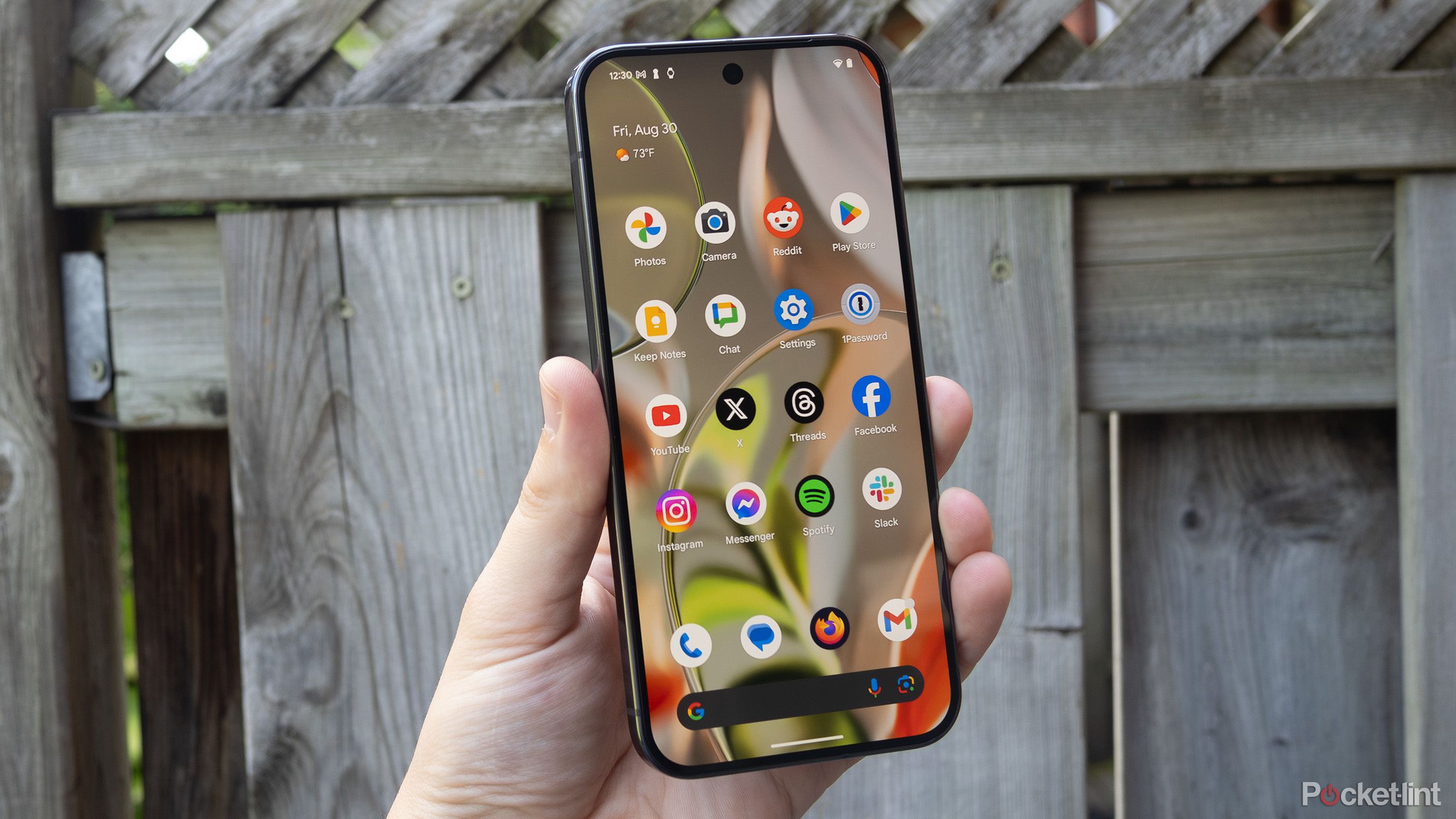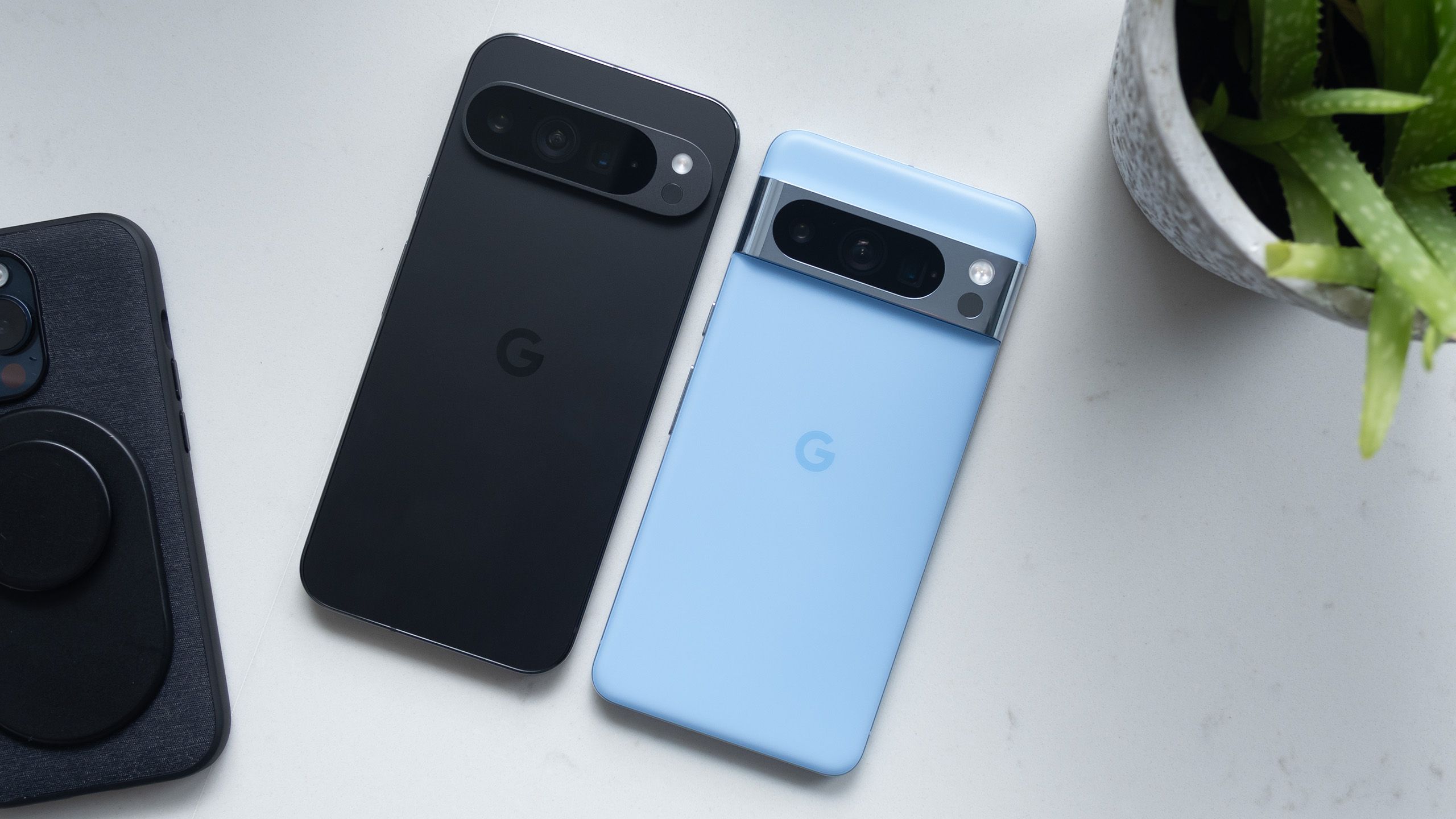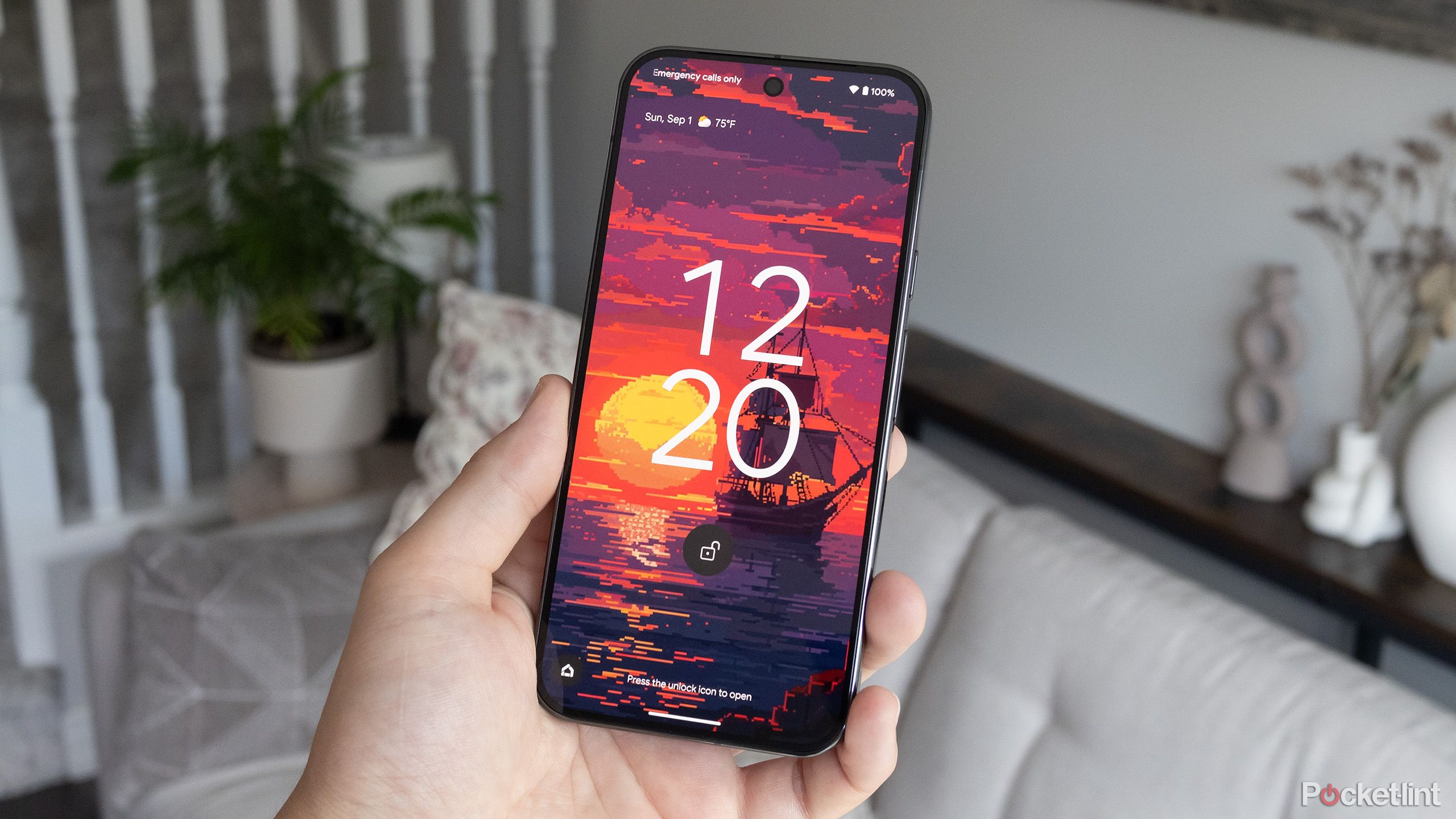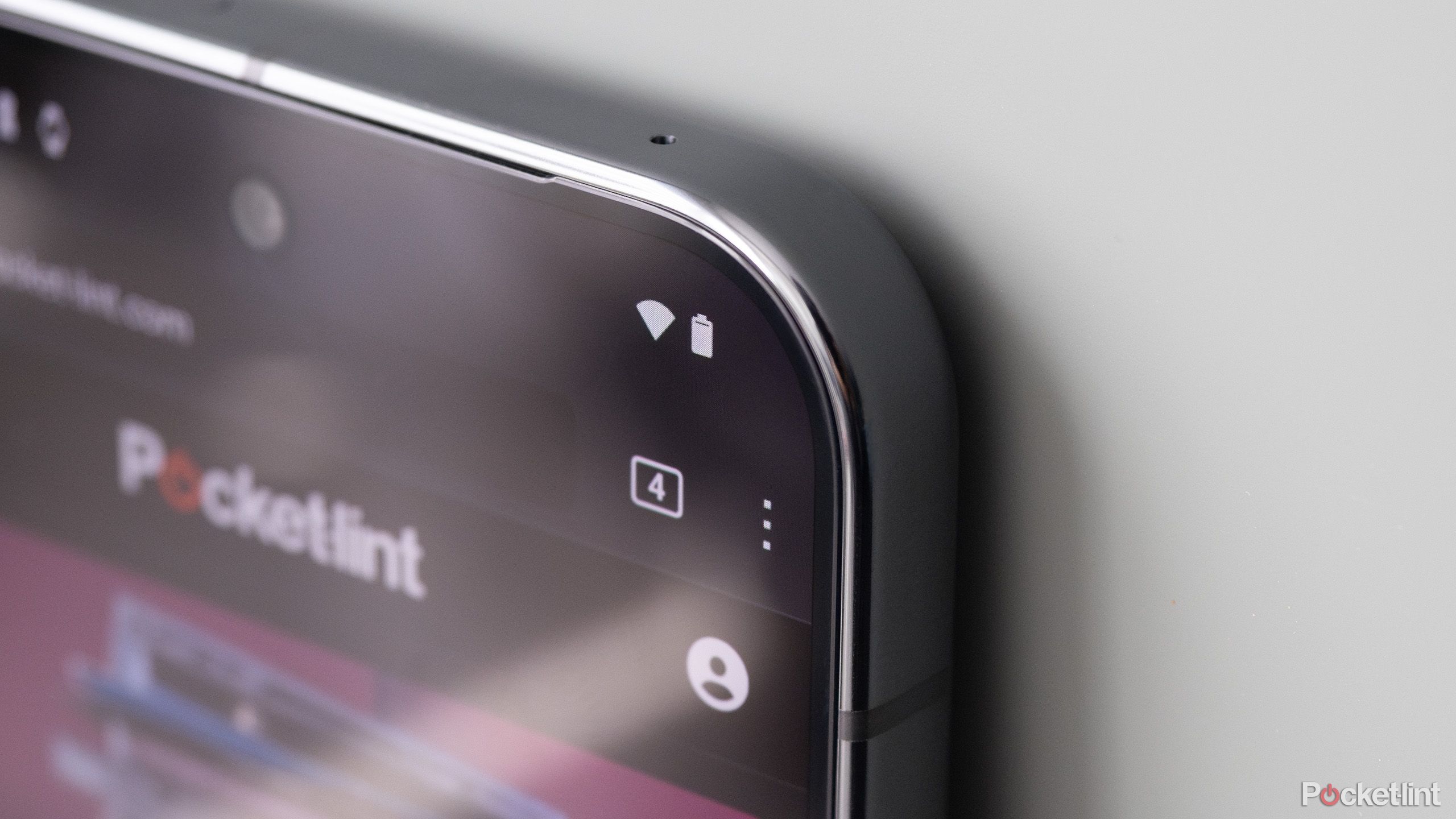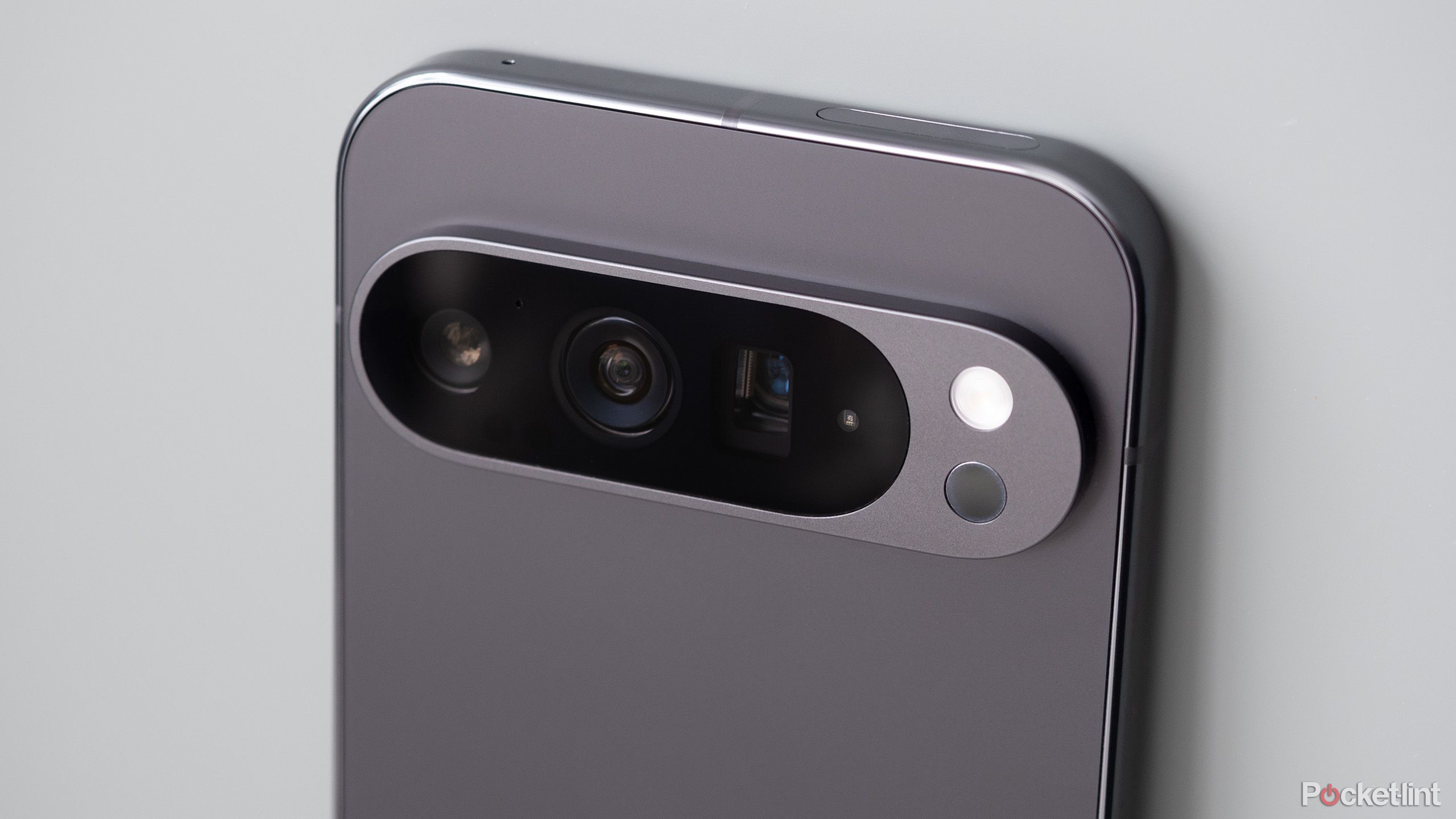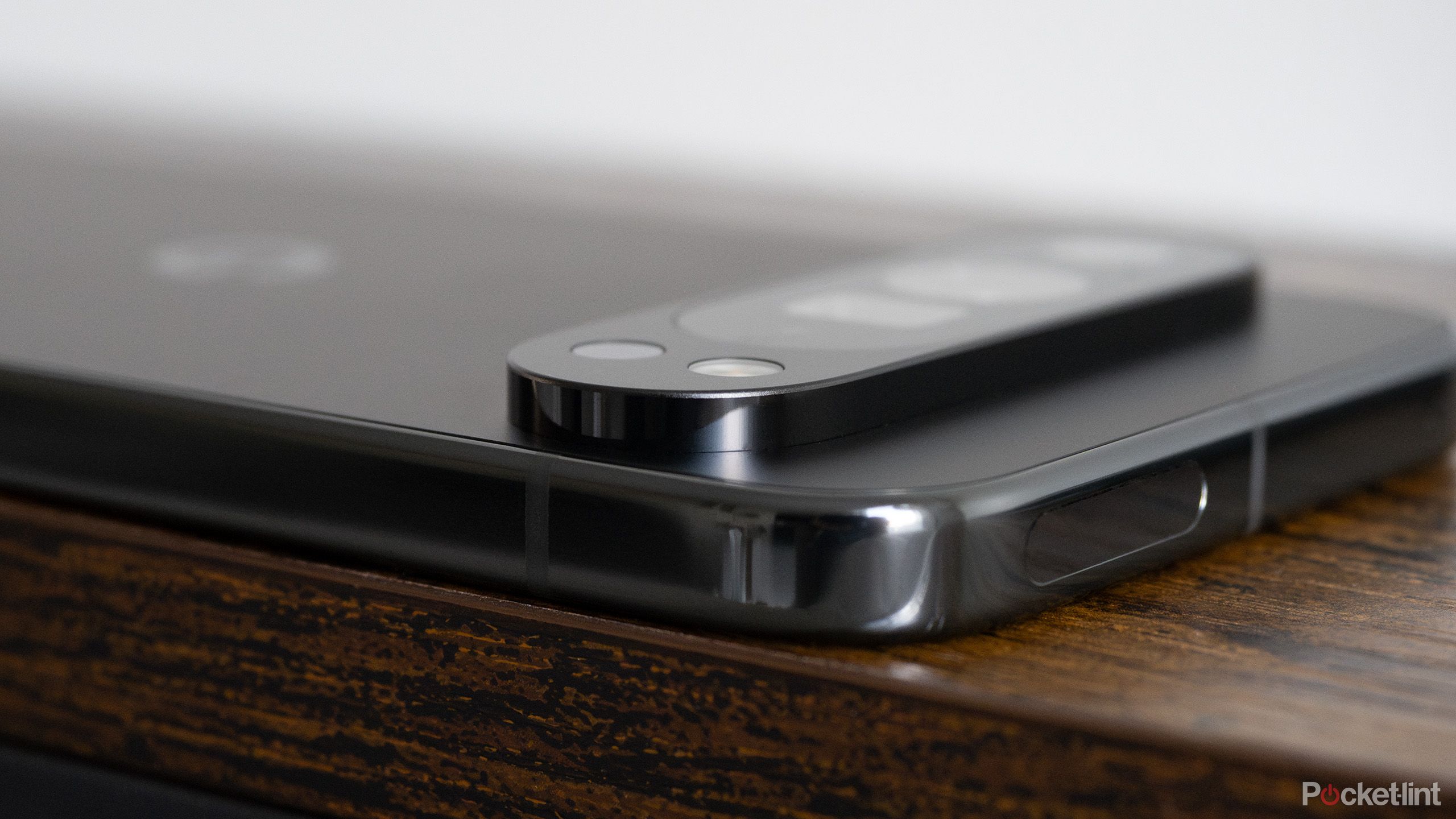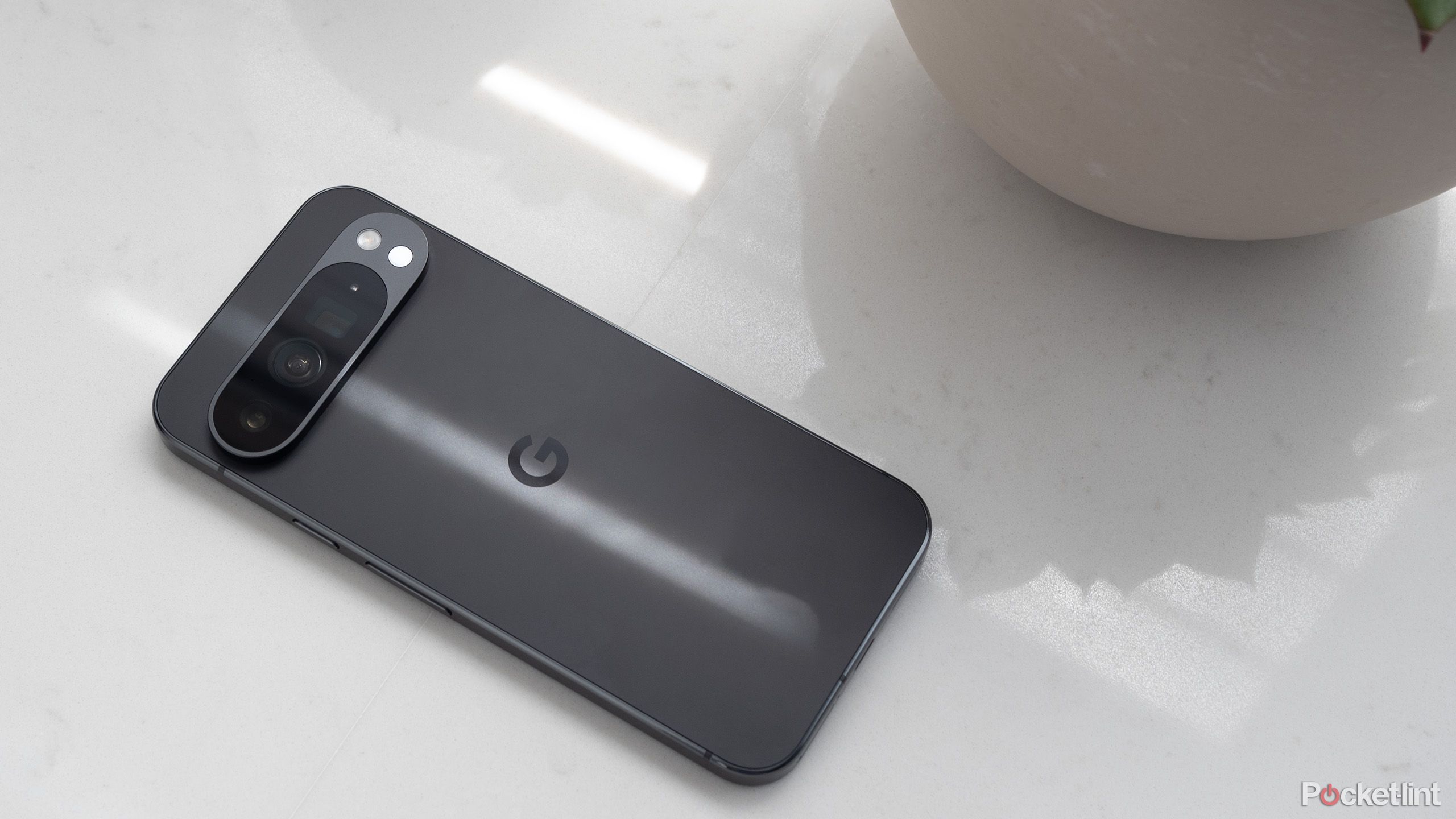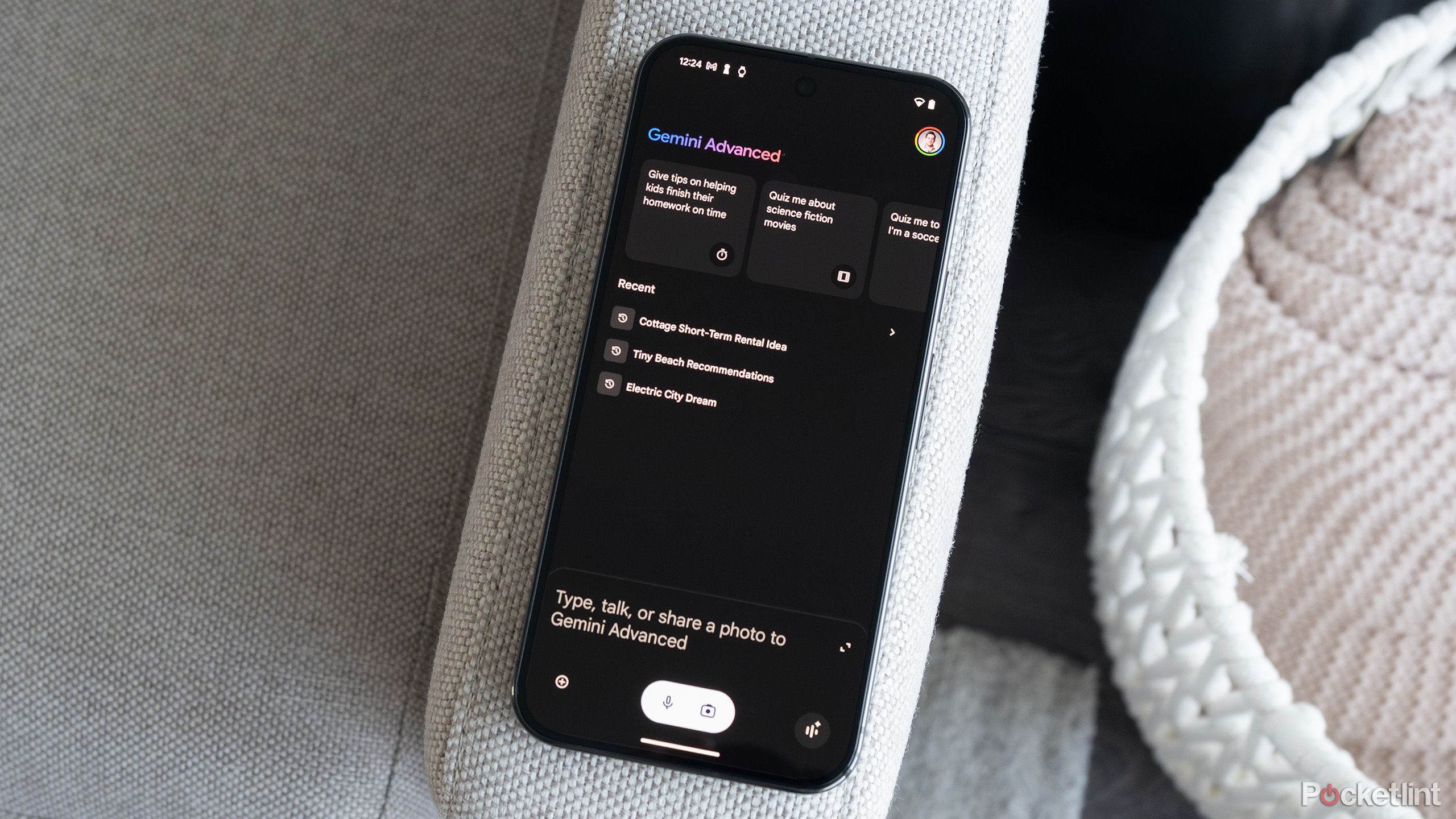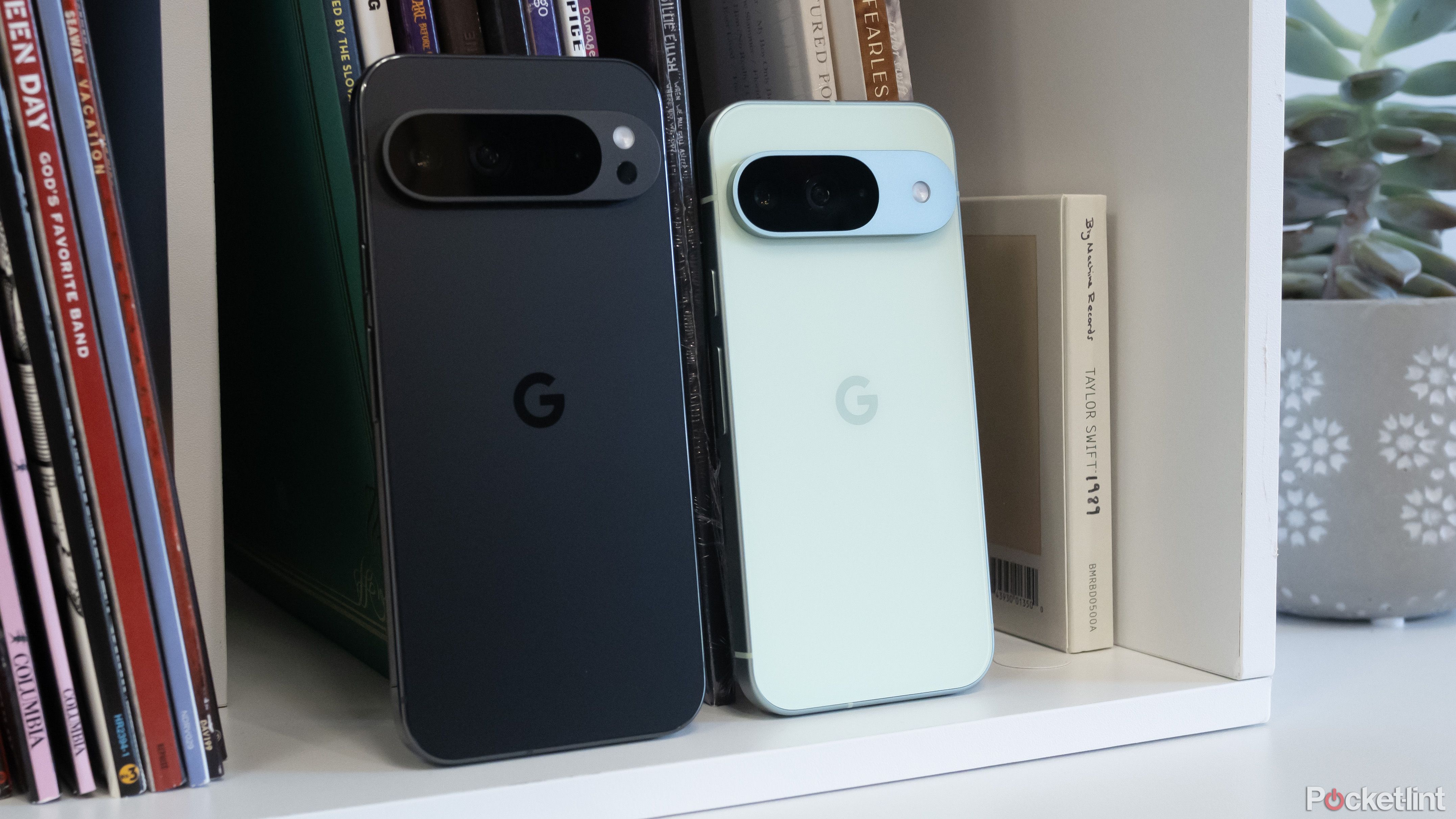Key Takeaways
- Excellent AI-powered photography features, including the impressive Zoom Enhance and Super Res Zoom Video
- Great-looking, Apple-like design with a great-feeling matte rear.
- Simple software that’s easy to navigate (but beware of some of the implications surrounding “Reimagine”).
Google’s Pixel 9 Pro XL is a photography powerhouse with an excellent, iPhone-like design that even the most hardcore Android fans will likely admit looks and feels great.
Did I expect to be this blown away by the photos and video Google’s latest flagship can capture? No, definitely not, especially since there aren’t notable camera hardware upgrades over last year’s Pixel 8 Pro. Through excellent, surprisingly true-to-life post-processing, I find I prefer the look of the Pixel 9 Pro’s shots over even those taken with Apple’s iPhone 15 Pro, which had been my previous favorite camera array. Thanks to surprisingly useful AI photo and video features, Google’s Pixel 9 Pro XL features what I’d confidently say is my favorite smartphone camera ever.
Add in the obviously Apple-inspired design with its smooth matte rear, minimized bezels, and tasteful color options, and you have an impressive all-around smartphone package. Of course, you could argue that no one needs a Pixel 9 Pro series smartphone this year because the base Pixel 9is a superb device that offers features typically reserved for higher-end smartphones, and I’d wholeheartedly agree with this perspective — unless you’re really into shooting photos and videos with your phone. If this is you, then the Pixel 9 Pro XL’s additional cost is worth its more expensive price tag. Its cameras are really that good.
Google’s Pixel 9 Pro XL is a photography powerhouse with an excellent, iPhone-like design that even the most hardcore Android fans will likely admit looks and feels great.
My thoughts on the Pixel 9 Pro will be added to this review when I get my hands on Google’s smaller 6-inch Pro smartphone. Beyond the display and battery size differences — the 6.3-inch and 6.8-inch — both the Pixel 9 Pro and Pixel 9 Pro XL are identical.


Recommended
Pixel 9 Pro XL
The Pixel 9 Pro XL is Google’s first pass at an iPhone 15 Pro Max-style bigger smartphone. It includes the tech giant’s Tensor G4 chip and offers new AI-powered features like the Screenshots app and “Reimagine.”
- Excellent AI-powered photography features
- Great-looking design
- Simple software that’s easy to navigate
- Expensive
- Some AI features are a bit terrifying
- Sides aren’t matte
Price, availability, and specs
Google’s Pixel 9 Pro XL and Pixel 9 Pro are available directly from Google and other retailers for $1,100 and $1,000, respectively, in porcelain, rose quartz, hazel, and obsidian (the latter featured in this review). These prices are $300 and $200 more than the $800 base Pixel 9.
The Pixel 9 Pro XL features a 6.8-inch 1344 x 12992 LTPO OLED display, while the Pixel 9 Pro has a 6.3-inch 1290 x 2856 LTPO OLED screen. Both displays include a 1-120Hz variable refresh rate and Gorilla Glass Victus 2, with brightness reaching 2,000 and 3,000 nits of peak brightness, respectively. The Pixel 9 Pro XL’s battery capacity is 4,700mAh, and the Pixel 9 Pro’s is 5,060mAh. Their weights are approximately 7.7oz (221g) and 7oz (199g), respectively.
Storage options start at 128GB and extend up to 1TB. This year, RAM has been upgraded to 16GB from last year’s 12GB. The smartphone also features Google’s Tensor G4 chip. Camera specifications include an f/1.68 50-megapixel main wide shooter, a marginally upgraded f/1.7 48-megapixel ultra-wide camera, and an f/2.8 48-megapixel telephoto shooter capable of up to 5x optical zoom. The front camera has been upgraded to an f/2.2 42-megapixel shooter from last year’s f/2.2 10.5-megapixel lens.
Pixel 9 Pro XL build and design
An iPhone-inspired look even the most hardcore Android fans will like
I covered it extensively in my Pixel 9 review, but I’m a big fan of the look of this year’s Pixel 9 line. The Pixel 9 Pro XL adopts a look reminiscent of the iPhone, with its squared-off sides and slightly rounded corners that make it overall easier to hold, especially at awkward angles. The back is matte, unlike the Pixel 9’s glossy rear, but unfortunately, its sides remain glossy, making them a smudge and dust magnet. I would have preferred a more premium all-matte-everything look that’s in line with the iPhone 15 Pro. This not only feels better when you run your fingers over it but also repels smudges and dust better.
Unfortunately, Google has ditched the visor for a sprawling camera bump that looks like it was dropped on the rear of the device. It’s not a deal-breaker, especially if you plan to put the device in a smartphone case, but it’s a step back from the identifiable rear camera visor featured in last year’s Pixel 8 Pro.
People like big phones, so it makes sense for Google to offer a bigger option.
Overall, the Pixel 9 Pro XL is a very solid-looking smartphone that offers a level of refinement instantly noticeable from the moment you pick it up. Pixel devices have always felt pretty good, but the Pixel 9 Pro XL takes things to another level.
It’s worth noting that this is the first time Google has offered a larger 6.8-inch version of its higher-end smartphone. A 6.8-inch screen is a decent size, and in my time with the device, it hasn’t felt unwieldy. People like big phones, so it makes sense for Google to offer a bigger option. But I prefer the smaller 6.3-inch Pixel 9 Pro/Pixel 9 size (it’s just easier to use with one hand), so I’m looking forward to getting my hands on this year’s smaller Pixel Pro 9 in a few weeks.
Pixel 9 Pro XL display
A stunning, high-end display that looks great under nearly all lighting conditions
The Pixel 9 Pro XL’s display is stunning, surpassing the vibrancy of Apple’s iPhone 15 Pro screen and, in some cases, even Samsung’s Galaxy S24 series, by a significant margin. The Pixel 9’s screen is more than bright enough at 1,800 nits with 2,700 nits of peak brightness, but the Pixel 9 Pro XL’s display takes things to a blistering 2,000 nits with up to 3,000 nits of peak brightness.
Colors are vibrant, and photos, videos, and games look sharp, but not wildly better than my experience with Google’s base Pixel 9, despite its OLED construction versus the Pixel 9 Pro XL and Pixel 9 Pro’s higher-end LTPO screen technology.
The display looks great, but at times, I’ve actually found it too bright, especially when viewing content under dark conditions, forcing me to turn the brightness down. On the other hand, I appreciate the added illumination when using the device outside under direct sunlight. You can also clearly see how much brighter the Pixel 9 Pro XL’s display is when compared directly with the Pixel 9’s screen.
Both the Pixel 9 Pro and 9 Pro XL sport higher resolution displays than the Pixel 9, at 1344 x 2992 and 1280 x 2856 pixel resolution, respectively. Colors are vibrant, and photos, videos, and games look sharp, but not wildly better than my experience with Google’s base Pixel 9, despite its OLED construction versus the Pixel 9 Pro XL and Pixel 9 Pro’s higher-end LTPO screen technology. To me, this just speaks to how good all the displays in Google’s Pixel 9 lineup are.
As a negative side note, I managed to get a very nasty scratch toward the middle of the Pixel 9 Pro XL’s display, despite its supposedly durable Corning Gorilla Glass Victus 2 construction. I’m pretty careful with my devices, so I have no clue how this happened, but it’s worth mentioning. That said, I don’t think this is a widespread issue with the Pixel 9 Pro XL’s display and is probably just bad luck on my part.
Pixel 9 Pro XL camera
This year’s key selling point is excellent camera performance (and not only because of AI)
The main reason to purchase the Pixel 9 Pro or Pixel 9 Pro XL over the Pixel 9 is for the extra camera features the higher-end phones offer. First off, the Pixel 9 Pro XL features a f/2.2 48-megapixel telephoto lens with up to 5x optical zoom. These are the same specs as last year, and overall, images shot with this camera look stellar. I still prefer a telephoto lens over an ultra-wide, and it would be great if Google ditched the latter from its base Pixel 9 in favor of a real optical zoom.
On the AI side of things, “Super Res Zoom Video” is back again and a bit more impressive than last year. The visual upgrade is still somewhat minimal, but clips look noticeably clearer in most cases. The feature is frustrating to activate as it requires you to turn on “Video Boost” and switch to 5x optical zoom before zooming into whatever digital zoom you desire, but it works well and remains impressive. As you can see above, the fish are slightly clearer and more vibrant in the Super Res Zoom enhanced clip above, even with X’s dismal video transcoding.
On that same note, Video Boost also remains impressive, particularly when it comes to smoothing out panning, which is still strangely choppy with the Pixel 9 Pro line, especially when switching between lenses. It would be great if there was a way to turn on Video Boost permanently, though I understand why there isn’t given that the feature requires every file to be uploaded to Google’s servers. Like last year, videos can sometimes get stuck converting to Video Boost and take upwards of 30 minutes to process, especially if you use the Pixel 9 Pro line’s new 8K upscaling (this is a welcome addition, but I don’t have much use for 8K footage). This means if you’re looking to post something quickly, Video Boost often isn’t an option.
Sticking with getting closer to subjects, this year “Zoom Enhance” allows you to improve the quality of images shot with digital zoom. Similar to Super Res Zoom Video, the changes are subtle but still noticeable, giving zoomed photos more definition and an overall slightly clearer picture that’s often more vibrant. Typically, the farther you zoom in digitally, the more impressive the results are when using Zoom Enhance. The improvements are pretty minimal, but if you’re into photography, you’ll notice them.
On the optical zoom side, images are clear, crisp, and impressive, particularly at 5x, which I found very useful on a recent sailing trip. However, I have experienced camera tilt at 5x zoom that causes images to be somewhat off-kilter. I’ve been fixing this with a quick crop, but I’m confident Google will resolve this issue in the coming weeks with a camera app update. Along with the already mentioned telephoto lens, the Pixel 9 Pro series features an f/1.7 50-megapixel wide camera that’s the same as last year’s primary camera.
It still snaps great photos that strike a balance between the over-processed feel of Samsung’s Galaxy series and the increasingly out-of-this-world take on photography Apple has been pushing for the last few years (take a look at the sky in iPhone 15 Pro photos, and you’ll see what I mean). Of all the flagship smartphones currently available, the Pixel 9 series offers the most true-to-life shots, which is a little ironic given the tech giant’s emphasis on AI this year, bringing into question what a photograph even is anymore.
Pixel 9 camera features like “Add Me,” which allows you to create a composite group shot without asking a stranger to snap the photo, are also part of the Pixel 9 Pro series’ quiver of AI-powered functionality. “Add Me” works just as well with the Pixel 9 Pro line and is the kind of innocent AI feature I actually find useful.
One important thing to note is that the Pixel 9 Pro’s AI camera features do not work when you have the main shooter set to 48 megapixels instead of 12 megapixels, which is a disappointing move on Google’s part. This likely has something to do with the current AI processing pipeline and how Google utilizes the larger sensor, but it would be great to see compatibility with 48-megapixel shots in the Pixel 10 Pro series nonetheless.
It was still possible to quickly snap the photos I wanted with the 48-megapixel sensor, but I needed to be very intentional with my shots.
Speaking of 48-megapixel shots, I don’t find the need to snap them very often unless I intend to crop the image in some way. The shutter is also still a bit slower when using the full sensor, making it difficult to rapidly take photos, which was a challenge while snapping pictures at the Toronto International Airshow, forcing me to mostly stick to 12-megapixel images. It was still possible to quickly snap the photos I wanted with the 48-megapixel sensor, but I needed to be very intentional with my shots.
There’s also the f/1.7 48-megapixel ultra-wide shooter that offers a minor upgrade over last year’s ultra-wide. It snaps decent photos, but beyond the occasional macro shot, I don’t find myself using the ultra-wide camera very often. And finally, there’s the f/2.2 42-megapixel front-facing camera that snaps clearer pictures than last year’s selfie shooter. I’m not a big selfie person, but the photos I shot are clear, with even exposure throughout. I often find that selfie cameras blow out an image’s highlights, and that’s not the case with the Pixel 9 Pro series’ front-facing camera.
Pixel 9 Pro XL performance
The Tensor G4 benchmarks under the Snapdragon 8 Gen 3, but who cares?
On the performance side, Google’s Tensor G4 runs great in the Pixel 9 Pro XL. Even under a heavy load, I didn’t experience the same heat issues as I occasionally encountered with the Pixel 8 Pro, likely because of the new internal cooling design and the phone’s larger size. However, the Tensor G4 is not that much of a jump over the Pixel 8 Pro in terms of raw performance. For those who care about benchmarks, the Pixel 9 Pro XL scores 1,901 for single-core and 4,707 for multi-core. These marks are well below those of devices powered by Qualcomm’s Snapdragon 8 Gen 3. Still, I didn’t encounter a single instance of slowdown, whether I was browsing the internet, playing games, doing minor photo edits in Adobe’s Lightroom CC, or watching the occasional video on YouTube.
I didn’t encounter a single instance of slowdown, whether I was browsing the internet, playing games, doing minor photo edits in Adobe’s Lightroom CC, or watching the occasional video on YouTube.
Unless you’re the definition of a smartphone power user, you’ll find very few issues with the Pixel 9 Pro XL’s performance, even if you’re a big multi-tasker, thanks to its ample 16GB of RAM. Smartphone chips have been overkill for years, and the Pixel 9 Pro XL is no exception. Battery life lasts well into the late evening with moderate use, similar to my experience with the Pixel 9. Given that the Pixel 9 Pro XL features a larger 5,060mAh cell versus the 4,700mAh battery in the Pixel 9, I’m curious to see if the smaller 6.3-inch Pixel 9 Pro achieves the same decent battery life.
Pixel 9 Pro XL softwareAI coupled with a throwback to a simpler era of iOS
On the software side, Google’s Pixel 9 Pro series supports all the same somewhat terrifying AI features as the Pixel 9, including “Reimagine,” which allows you to add nearly anything to an image with prompts, and Pixel Studio, Google’s AI app that generates images. There’s also Screenshots, an excellent app that uses AI to surface relevant screenshots, and more.
Reimagine’s guardrails are pretty loose. With inventive prompts, you can easily trick it into creating off-putting images, and in some cases, these AI-edited photos look very convincing. Don’t get me wrong, they’re often ridiculous-looking and clearly fake, but that’s not always the case (check out that picture below of a submarine in Lake Ontario). On the other hand, Pixel Studio is a silly AI image generator in line with Meta AI or OpenAI’s DALL·E 3 that works reasonably well.
My key concern is that these images might be posted as reality without any obvious indication that they are AI-generated. It’s a slippery slope we’ve been sliding down for months, and it’s only a matter of time before these features reach other Android devices, making AI-altered and generated images even more common on social media.
For more on the Pixel 9 series’ potential AI pitfalls and the serious implications Reimagine could have, check out my Pixel 9 review. It’s worth mentioning that even in its early state, Gemini and its more conversational counterpart, Gemini Live (which is free for a year with the purchase of a Pixel 9 device and $20/month after), work shockingly well. Even though I have encountered the occasional glitch, I’ve never truly been able to have a conversation with an AI before Gemini/Gemini Live. Does talking to an AI assistant fit into my workflow, though? Not really, and I’m not sure it ever will.
Lastly, I’m a big fan of the Pixel’s Android skin. It’s simple, straightforward, and clean. In fact, I find it easier to navigate than iOS 18. Apple’s mobile operating system has become increasingly complicated over the last few years, and Android 14 running on the Pixel 9 series has made that even more apparent. It’s also great that Google has promised to provide seven years of software updates to the Pixel 9 line.
Should you buy the Google Pixel 9 Pro XL?
It’s one of Google’s most complete smartphone packages in years
Most people should opt for the standard Pixel 9, but if you’re into photography, the Pixel 9 Pro series has a lot to offer. It captures my favorite smartphone photos yet, offering a more true-to-life balance that sits firmly between Samsung’s intense saturation and Apple’s increasingly inconsistent, out-there take on images and videos. This is in stark contrast to the various photo and video AI features offered by the Pixel 9 Pro series, including Zoom Enhance and Super Res Zoom Video, which I found particularly useful.
Overall, the Pixel 9 Pro line offers one of Google’s most complete smartphone packages in years, but if you’re not an avid photographer, you can save a few hundred dollars and stick with the standard Pixel 9.
That said, I’m still concerned about Reimagine’s broader implications, given how easy it is to use and how convincing the results can be sometimes. Additionally, I haven’t found a way to integrate Gemini into my life, despite its impressive capabilities. Overall, the Pixel 9 Pro line offers one of Google’s most complete smartphone packages in years, but if you’re not an avid photographer, you can save a few hundred dollars and stick with the standard Pixel 9.
This device was provided to Pocket-lint by Google.


Recommended

